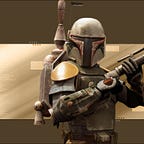Lets now setup Unity with a more productive layout than the default. The default layout is what is seen the first time Unity is opened. There is nothing wrong with this layout, but it can be changed to make things flow better during the game making process.
If the editor layout is different, the layout can be reset to default by clicking on the Layout drop down on the top right side of the editor and choosing Default from the drop down menu. This can be done at anytime to return to the default layout.
Start by going to the layout dropdown and selecting the Tall layout. This will Move things around giving a bit better workflow With the Hierarchy next to the Inspector and the Project files displayed just below the Hierarchy. This keeps all that information close for easy reference and access.
Having the Game window and the Scene window each display in the same area becomes cumbersome when working in Unity.
So, the next change to make is to move the Game window below the Scene window. This allows for instant feedback on what the camera sees in your scene as objects are added, changed, or moved within the scene. Make both windows approximately equal size, lining up roughly with the Project tab.
Alternatively if developing for mobile applications it may be better to have the Scene and Game tabs side by side. This better represents the target devices while developing for them.
Next lets tweak the Project tab. It is currently split in half with the folder list and a preview pane. This limits what we can see at one time as we can only view one folder at a time due to this being in preview mode.
So to better handle project files lets switch it to a list view which will allow full navigation of all the project files. To do this click on the three dots on the top left of the project tab and select One Column Layout. Now all the project files and folder can be accessed and worked on as needed.
Now that all those changes have been made lets make sure to save this layout so it can be accessed as needed.
To do this click on the Layout drop down which now shows Tall. Click on Save Layout from the Drop down menu. A Save Layout window will pop up. Give the layout a name, in this case it is called Professional Layout. Click on Save. The Professional Layout can now be switched to just as the default layout was previously. This ensures that the Professional Layout is now always accessible when required.
One additional handy tip relates to how unity handles game changes when running the game. Any changes made while the game is running (in Playmode) are not saved in the unity editor. So if that perfect setting is found while testing in Playmode that change will not be saved. That change must be made in the editor again after Playmode has been turned off.
As a visual reminder that Playmode is active it is a good practice to change the editors color while it is in this mode. Unity makes this fairly easy by going to the Edit menu and choosing Preferences. In the Window that opens up choose Colors on the Left hand column. In the right hand column under General there is an entry for Playmode tint. Click on the color bar and choose the color that will be best for you. Now whenever Playmode is active the editor will change to the color chosen.
The editor should now be setup to provide a productive and intuitive workflow allowing for a better development experience.
